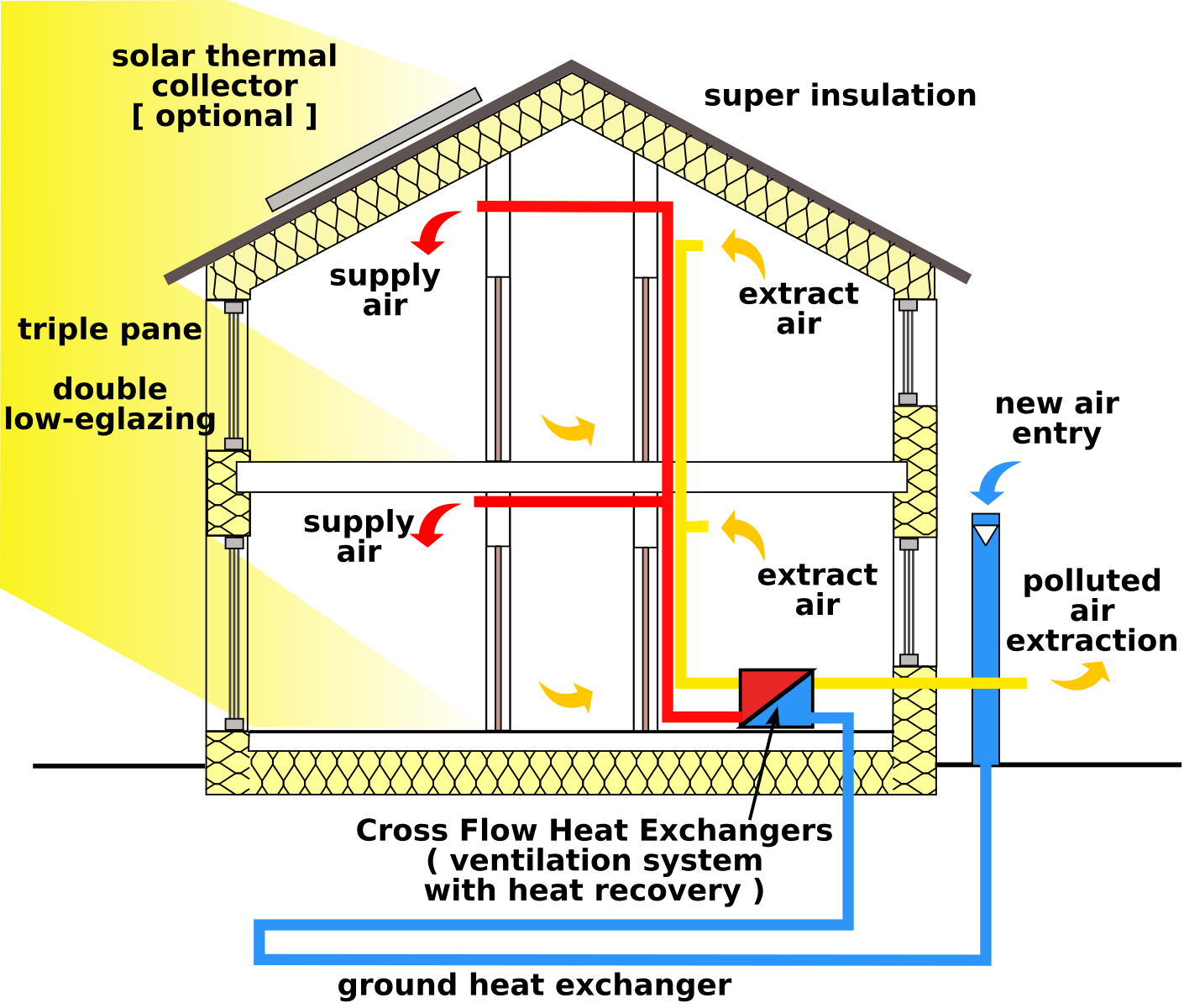IB Syllabus focus:
‘Behaviour changes and efficient technologies reduce imports and emissions: building design, efficient lighting, shipping with sails, and circular-economy product design. Evaluate two examples.’
Conservation and efficiency strategies are essential for reducing environmental impacts and promoting sustainability. By lowering energy use and improving technology, societies can reduce resource dependence and environmental damage.
Conservation and Efficiency in Environmental Systems
Conservation and efficiency are critical approaches for ensuring the sustainable use of natural resources. Both concepts aim to reduce waste, cut emissions, and extend the lifespan of finite resources, though they operate in slightly different ways.
Conservation
Conservation refers to reducing the overall use of resources through behavioural changes and policy choices. It prioritises demand reduction by minimising consumption, preventing waste, and encouraging sustainable practices at the individual, community, and governmental levels.
Conservation: The practice of reducing resource consumption and waste through behavioural change and sustainable decision-making.
Efficiency
Efficiency is the improvement of technologies and processes to ensure that less energy, material, or water is used to produce the same output. This focuses on optimising resource use through innovation and design.
Efficiency: The ability of a system, device, or process to achieve the same or greater output while using fewer resources or producing fewer emissions.
Both conservation and efficiency contribute to sustainability, defined as meeting present needs without compromising the ability of future generations to meet their own needs.
Behavioural Changes Supporting Conservation
Behavioural changes are often low-cost, immediate strategies for reducing environmental impacts. Examples include:
Turning off lights and appliances when not in use.
Reducing private car use by shifting to public transport, walking, or cycling.
Lowering heating and cooling demand by adjusting thermostat settings.
Choosing products with minimal packaging or reusing items.
These changes collectively lower resource imports and reduce greenhouse gas emissions, making them vital to sustainable management.
Social and Economic Incentives
Governments and institutions can encourage behavioural changes through:
Education campaigns to raise awareness about environmental impacts.
Legislation and regulations, such as banning inefficient lighting technologies.
Financial incentives, including subsidies for public transport or renewable energy.
Efficiency Through Technology
Technological innovation is a central driver of efficiency. Advances in design and production reduce both energy consumption and emissions.
Energy-Efficient Building Design
Buildings are significant contributors to global energy use. Efficiency can be achieved through:
Insulation and airtight construction, reducing heating and cooling demand.
Passive solar design, where windows, orientation, and thermal mass regulate temperature.
Efficient appliances and systems, such as LED lighting and heat pumps.
Energy-efficient building design reduces heating and cooling loads through orientation, insulation, high-performance glazing, shading, airtightness, and natural ventilation.

Cross-section of a passive-house dwelling showing insulation continuity, triple-glazed windows, shading, airtightness, and heat-recovery ventilation that together reduce energy demand. This diagram illustrates the ‘fabric-first’ approach emphasised in conservation and efficiency. It includes some details beyond the syllabus scope (e.g., specific wall build-ups), but the core concepts match the notes. Source.
Efficient Lighting Technologies
Traditional incandescent bulbs convert only around 10% of their energy into light, wasting the rest as heat. Replacing them with LEDs or compact fluorescent lamps (CFLs) drastically reduces electricity demand.
LEDs last up to 25 times longer than incandescents.
They consume up to 85% less energy for the same light output.
Large-scale adoption can cut national electricity demand significantly.
Shipping with Sails and Hybrid Systems
Modern shipping relies heavily on fossil fuels, especially heavy fuel oil, which is highly polluting. Efficiency improvements include:
Wind-assisted propulsion: Adding sails or rotor sails reduces fuel consumption.
Hybrid designs: Combining efficient engines with renewable technologies.
These methods lower operating costs and cut greenhouse gas emissions, contributing to global sustainability targets.
Shipping with modern sails (e.g., rotor sails) can cut fuel use on suitable routes by harnessing wind, lowering operational emissions without changing the cargo.

Photograph of Norsepower rotor sails installed on the Maersk Pelican, illustrating wind-assisted propulsion for large vessels. Rotor sails generate thrust via the Magnus effect, reducing engine load and fuel consumption. This real-world application exemplifies conservation through efficiency upgrades in transport. Source.
The Circular Economy
The circular economy is a design strategy where products and systems are planned to minimise waste, extend product lifespans, and reuse materials. This contrasts with the linear "take–make–dispose" model.
Circular Economy: An economic model focused on designing out waste, keeping products and materials in use, and regenerating natural systems.
Circular economy principles applied to product design improve efficiency and reduce imports by lessening demand for virgin materials.
Examples include:
Product-as-a-service models, where companies lease products instead of selling them, ensuring materials are recovered.
Design for disassembly, allowing easy repair, reuse, or recycling.
Closed-loop recycling systems, where materials are continuously reprocessed.
Evaluating Two Examples
Example 1: Efficient Lighting
Replacing traditional bulbs with LEDs is a clear demonstration of conservation and efficiency.
Conservation impact: Encourages reduced consumption through better awareness of electricity use.
Efficiency impact: Provides the same light with far less energy input.
Environmental benefit: Cuts carbon emissions by lowering fossil fuel demand for electricity.
Economic benefit: Reduced household energy bills and lower national demand for electricity imports.
Example 2: Circular-Economy Product Design
Designing smartphones for disassembly and recycling demonstrates conservation and efficiency in practice.
Conservation impact: Reduces extraction of rare-earth metals and finite resources.
Efficiency impact: Extends product lifespans through repair and reuse.
Environmental benefit: Minimises e-waste, toxic pollution, and resource depletion.
Economic benefit: Creates new industries in recycling and remanufacturing.
Wider Implications
Conservation and efficiency reduce resource dependency, enhance energy security, and mitigate environmental harm. They align with global sustainability goals by ensuring societies operate within the regenerative capacity of ecosystems. Both strategies are crucial for addressing climate change, ensuring long-term environmental stability, and supporting equitable access to resources.
FAQ
High-income countries often focus on efficiency technologies, such as smart grids, passive buildings, and renewable-powered transport. These solutions require significant investment and infrastructure.
Low-income countries typically rely more on behavioural conservation, such as reduced energy use, shared transport, or reliance on locally sourced materials. Limited access to capital can make high-tech efficiency measures less practical, but low-cost conservation can still achieve meaningful impact.
Consumer choices directly influence demand for efficient products. For example:
Selecting LED bulbs over incandescent ones reduces national electricity use.
Choosing public transport or cycling lowers oil demand.
Supporting circular-economy products encourages industries to design for reuse.
Changing consumer behaviour also creates market signals, pushing businesses to prioritise efficiency in their products and services.
Shipping accounts for around 3% of global greenhouse gas emissions, largely due to the burning of heavy fuel oil.
Efficiency improvements such as rotor sails, hull redesign, and slow steaming reduce emissions and fuel costs. These strategies are especially significant because shipping underpins global trade, meaning improvements in this sector deliver wide-scale benefits for sustainability and conservation.
Circular design faces several barriers:
Higher initial costs for research and redesign.
Lack of recycling infrastructure in many regions.
Consumer preference for cheap, disposable goods.
Additionally, global supply chains make recovering and reusing materials more difficult. Despite these challenges, legislation and incentives are increasingly supporting circular strategies.
Governments can integrate both strategies through:
Tax incentives for energy-efficient technologies.
Public campaigns encouraging reduced energy use.
Regulations mandating efficiency standards in housing and appliances.
Subsidies for sustainable transport options.
By combining efficiency with conservation, societies achieve both technological improvements and behavioural changes, maximising sustainability outcomes.
Practice Questions
Question 1 (2 marks)
Define the term efficiency in the context of resource use and explain why it is important for sustainability.
Mark scheme:
1 mark for correct definition of efficiency: achieving the same or greater output while using fewer resources or producing fewer emissions.
1 mark for explaining its importance: efficiency reduces resource demand and environmental impact, supporting sustainable development.
Question 2 (5 marks)
Evaluate two examples of conservation or efficiency strategies, explaining how each reduces imports and emissions.
Mark scheme:
Up to 2 marks for describing the first example clearly (e.g., energy-efficient lighting, building design, shipping with sails, or circular-economy product design).
Up to 2 marks for describing the second example clearly, as above.
1 mark for evaluation: explaining the extent to which each example reduces imports and emissions (e.g., lighting reduces electricity demand and cuts fossil fuel imports; shipping with sails lowers reliance on heavy fuel oil).

